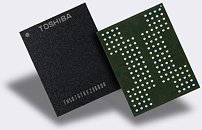
Transcend Launches U.2 Enterprise SSD (eSSD) for Data-Intensive Workloads
Transcend Information Inc. (Transcend), a leading global manufacturer of memory storage solutions, introduces the ETD410T, a new U.2 enterprise solid-state drive (eSSD) designed for high-performance computing environments. Tailored to meet the stringent demands of enterprise users for ultra-fast data transfer and reliability, the ETD410T adopts the PCIe Gen 4 x4 high-speed interface and U.2 15 mm form factor, featuring a DRAM cache for exceptional performance and robust data protection. It is an ideal solution for data centers and enterprise applications.
Durable and Stable for High-Frequency Workloads
The Transcend ETD410T is a professional solution optimized for read-intensive workloads. Compliant with JESD219 standards, it offers a durability of up to 7,000 Program/Erase (P/E) cycles to withstand frequent use over long periods. With Quality of Service (QoS) consistently maintained between 99.9% and 99.99%, it delivers stable and reliable operation even in demanding enterprise environments, ensuring consistent and dependable data access.
Durable and Stable for High-Frequency Workloads
The Transcend ETD410T is a professional solution optimized for read-intensive workloads. Compliant with JESD219 standards, it offers a durability of up to 7,000 Program/Erase (P/E) cycles to withstand frequent use over long periods. With Quality of Service (QoS) consistently maintained between 99.9% and 99.99%, it delivers stable and reliable operation even in demanding enterprise environments, ensuring consistent and dependable data access.




